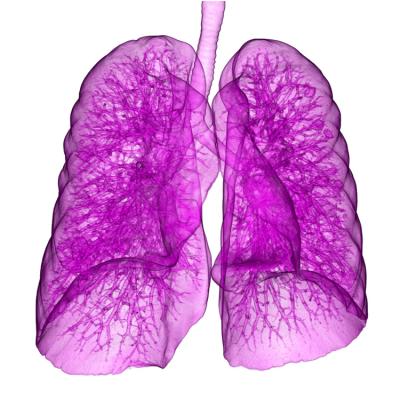
January 8, 2020 — Numerous studies have shown that monitoring physical activity promotes better health – from reducing body mass index to watching for signs of hypertension, for example. A new study suggests step counters could play yet another role: predicting outcomes for people undergoing chemoradiation therapy for lung cancer.
“I consider step counts to be a new vital sign for cancer treatment,” said Nitin Ohri, M.D., a radiation oncologist at Albert Einstein College of Medicine and Montefiore Health System in New York and lead investigator of the study published in the International Journal of Radiation Oncology • Biology • Physics, the flagship scientific journal of the American Society for Radiation Oncology (ASTRO). "We found that tracking our patients’ activity levels prior to treatment could give clinicians data with powerful implications.
“Our study shows that people who are inactive for their age will have a significantly more difficult time with radiation therapy," he continued. "They are more likely to end up in the hospital, experience treatment delays and disease recurrence; and are less likely to survive. This is valuable information worth considering when making treatment decisions.”
Ohri and his team measured activity levels for 50 patients with locally advanced, non-small cell lung cancer who wore step counters prior to undergoing concurrent chemoradiation therapy. Participants were categorized as inactive, moderately active or highly active, based on the number of steps they took each day and adjusted for their age.
Researchers found dramatic differences in how well patients in each group fared during treatment, with people who were inactive at baseline faring poorest. For example, half of the people in the inactive group had to be hospitalized during treatment, compared to just 9 percent of people who were more active. Only about 10 percent of inactive patients were alive and without disease after 18 months, compared to roughly 60 percent of those who were more active. Overall, 45 percent of inactive patients were still alive after 18 months, compared to more than 75 percent of those who were more active.
While this study focused on activity levels prior to the start of treatment, previous research by Ohri has shown that patients often become less active during treatment, with negative consequences. “When activity levels declined during treatment, that was an indicator that patients are at high risk for hospitalization within the next few days,” he said.
While Ohri acknowledges that the modest study size limits its ability to change clinical practice, he hopes his findings will encourage investigators in large, multi-institutional clinical trials of new cancer treatments to monitor patient activity levels as part of their data collection.
“If someone’s step counts decrease dramatically during treatment — say, from 5,000 to 2,000 steps a day — that change needs to spark some conversations. Having an objective indicator of patients’ functional status could be critical in identifying who needs extra care during treatment.”
For more information: www.astro.org


 July 10, 2025
July 10, 2025 








